by Justin Mckibben | Mar 19, 2019 | Addiction Treatment, Depression, Detox, Inpatient Treatment, Mental Health, News, Outpatient Treatment
Discrimination Through Denial of Coverage
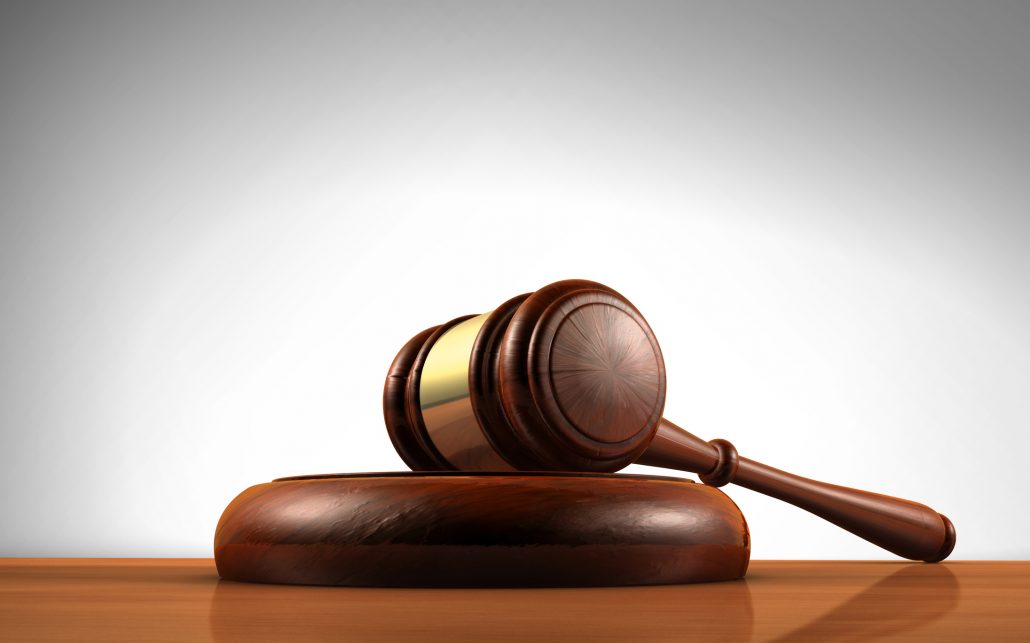
Health insurance is probably going to be one of the great debates of this period in American history. There is already plenty of contention about how to properly provide coverage for those who need it. Some claim the changes made in the last decade have gone too far. Others argue it has not gone nearly far enough. Healthcare reform is a hot button issue in our world today. Needless to say, a big part of this conversation has to do with parity coverage for mental health. Now a new landmark court ruling is going to make a monumental difference for mental health and addiction treatment insurance coverage.
Simply put, the largest behavioral health care company in America has been denying coverage to some of its most vulnerable members to save money. And now, a federal court decision may put more of a spotlight on insurance companies.
Wit v. United Behavioral Health
The case was brought in front of a federal court in Northern California against United Behavioral Health (UBH). UBH is a company that manages behavioral health services for UnitedHealthcare and other health insurers. The court found that UBH denied claims of tens of thousands of people seeking mental health and substance use disorder treatment. The company was using defective medical review criteria in order to reject claims.
In Wit v. UBH, over 50,000 individuals were reportedly denied coverage based on the flawed review criteria. 11 plaintiffs sued UBH on the behalf of these victims. One victim, in particular, is Natasha Wit. Natasha had been seeking treatment for several chronic conditions, including:
Wit was repeatedly denied coverage for her treatment, despite the fact she did have healthcare benefits that should have offered coverage. Her family ended up paying out nearly $30,000 for treatment. And they are just one of the thousands of families to face the same discrimination.
Looking at the Marks Against UBH
According to recent reports, United Behavioral Health has been failing its members in more ways than one.
Federal courts determined that UBH developed internal guidelines that were “unreasonable and an abuse of discretion” and “infected” by financial incentives designed to restrict access to care for those who should qualify for coverage. Essentially, UBH was manipulating internal guidelines to avoid providing coverage that members had every right to under the law.
For many of those struggling with substance use disorder, defective criteria for coverage can equate to a death sentence. When looking over the requirements set by UBH, it is no wonder why the courts say they are illegitimate.
Firstly, their medical-necessity criteria fail to provide coverage to those chronic and comorbid conditions. Generally accepted standards of care state these conditions should be effectively treated, even when those conditions:
- Persist
- Respond slowly to treatment
- Require extended or intensive levels of care
However, UBH set guidelines that only approve coverage for what they labeled “acute” episodes or crises. For example, only individuals who were actively suicidal or suffering from severe withdrawal could be considered for coverage.
In other words, for someone who struggled with substance use disorder or mental illness, you had to be knocking on death’s door to get a chance at treatment. The court found that these guidelines were not acceptable.
Furthermore, UBH fails to use national evidence-based guidelines for covering different levels of care for mental health and substance abuse treatment, such as:
These are guidelines that have been developed by clinical specialty nonprofit organizations.
Additionally, UBH’s guidelines improperly required reducing the level of care, even if the providers who were treating them recommended maintaining a higher level of care. So patients would be removed from more intensive residential treatment programs and pushing into some form of outpatient therapy, even if the specialists argued that they were not ready.
This is a big deal. Most recovery advocates and healthcare providers agree that insurance companies should not be the ones telling treatment providers how to care for their patients.
-
State Mandated Guidelines
Furthermore, some states have mandated specific guidelines for evaluating the medical necessity for behavioral health services. UBH was also found to have violated these requirements for reviewing substance use disorder claims as well.
The case against United Behavioral Health was filed under the Employee Retirement Income Security Act of 1974 (ERISA). This is a federal mandate that governs group health insurance policies through private employers. More specifically, ERISA requires insurance plan administrators to function in a fiduciary capacity when overseeing employee benefit plans. This includes coverage for mental health and substance use disorder treatment.
In Wit v. UBH, the court determined that UBH was in breach of its fiduciary duties by developing and employing faulty medical necessity criteria for behavioral health services. Therefore, the court alleges that UBH is in violation of its obligations under this federal law.
What Does this Mean for Addiction Treatment Insurance Coverage?
This case is exposing insurers for refusing care to people at serious risk of death by overdose or suicide. It is important to remember that UBH is not the only insurance provider trying to find ways around federal and state coverage guidelines. Given the nature of these violations, advocates believe that regulators should immediately start examining the market conduct of all healthcare plans across the country.
Judge Joseph C. Spero in Wit v. UBH also points out that the company was circumventing the Mental Health Parity and Addiction Equity Act of 2008, also known as the Federal Parity Law.
Parity law actually requires insurers to cover illnesses of the brain, such as depression or addiction, the same as illnesses of the body, such as diabetes or cancer. In his ruling on Wit v. United Behavioral Health, Judge Spero highlights an abundance of evidence that guidelines created by the UBH were designed to diminish the impact of the 2008 Parity Act in order to keep benefit costs down. In other words, it is clear that the company was actively trying to work around federal law in order to avoid providing coverage to people with mental illnesses and addictions.
For those in the mental health and addiction communities, this brings new awareness to the discriminatory practices of treating mental health conditions differently than physical conditions. The new hope is that insurance providers will understand the consequences of discrimination against those who need help. With so much going on in healthcare, the Federal Parity Law must be protected.
Far too many people suffering from mental health and substance use disorders never get the help that they need. The last thing we need in a country devastated by an opioid crisis and rising overdose death rates is to create more roadblocks to treatment resources.
Palm Healthcare Company believes that if our country is ever going to overcome the damage of the opioid epidemic, we have to offer more comprehensive treatment options to those who still suffer. Insurance companies should not be keeping people from the care they deserve. Prevention is important, but we also believe in taking care of those who are already in the grips of substance use disorder by offering compassionate and effective care. If you or someone you love is struggling, please call toll-free now. We want to help.
CALL NOW 1-888-922-5398
by Justin Mckibben | Sep 17, 2018 | Addiction, Addiction Treatment, Dual Diagnosis, Mental Health, Relationships, Sex Addiction
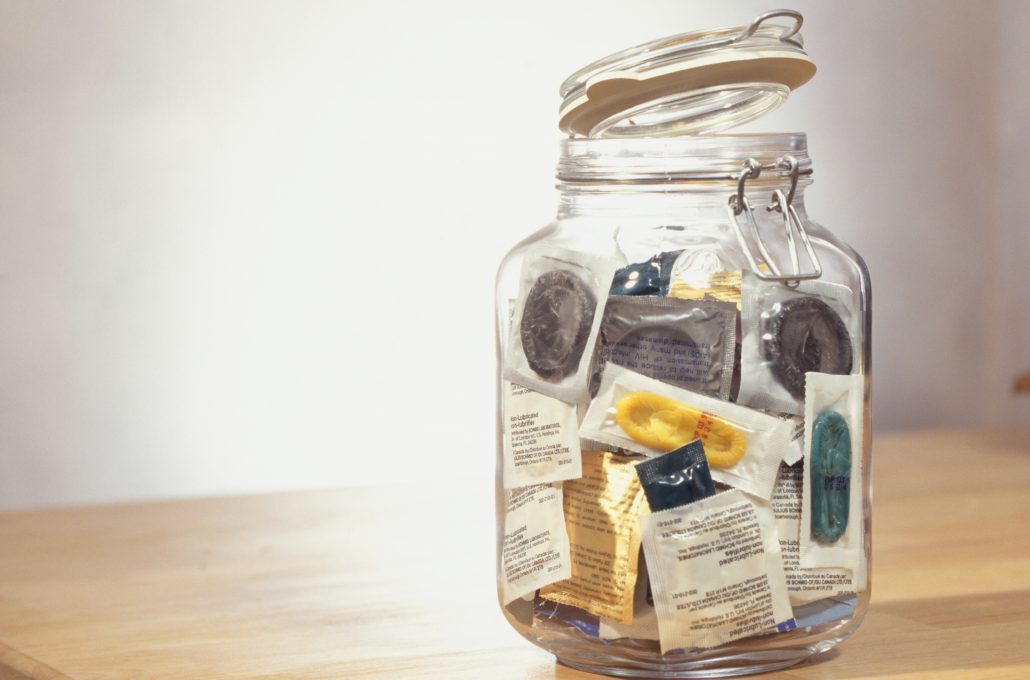
When they hear the words “sex addiction” most people probably have a similar, simplistic assumption of what that means. They will picture someone who has sex a lot throughout the day, or maybe someone who has a lot of sexual partners. Some people associate it with over-indulging in pornography or engage in an inappropriate sexual behavior.
However, these are not necessarily the defining features of sex addiction. Not everyone who suffers from it will have multiple partners, and they most certainly don’t all act out inappropriately. While some of these scenarios may be present in those who experience sex addiction, many advocates believe the vital element of sex addiction has to do with the consequences of their behaviors and their inability to control them. Other terms for sexual addiction include:
- Hypersexual Behavior Disorder
- Hypersexuality
- Sexual dependency
- Compulsive sexual behavior
It is also known as nymphomania in females and satyriasis in men. So what is sex addiction, and can it be treated?
The DSM Debate
The most difficult part of the conversation is trying to talk about what sex addiction actually means when it is not officially recognized as a mental health disorder.
One of the most essential tools we use for understanding and treating mental health is the Diagnostic and Statistical Manual of Mental Disorders (DSM). The DSM is a widely recognized compendium of mental health diagnostics. This crucial resource receives regular updates from the American Psychiatric Association (APA).
At this point in time, the DSM does not include criteria for sex addiction. Among mental health professionals in the APA, this is the cause of a great deal of debate. For a quick timeline:
(DSM-III-R), referred to “distress about a pattern of repeated sexual conquests or other forms of non-paraphilic sexual addiction, involving a succession of people who exist only as things to be used.” The reference to sexual addiction was subsequently removed.
The DSM-IV-TR did not include sexual addiction as a mental disorder.
Some authors suggested that sexual addiction should be re-introduced into the DSM system; however, sexual addiction was rejected for inclusion in the DSM-5, which was published in 2013.
Darrel Regier, the vice-chair of the DSM-5 task force, stated:
“Although ‘hypersexuality’ is a proposed new addition… [the phenomenon] was not at the point where we were ready to call it an addiction.”
The proposed diagnosis does not make the cut as an official diagnosis due to a lack of research into diagnostic criteria for compulsive sexual behavior, according to the APA.
As of 2017, none of the official regulatory bodies for Psychosexual Counselling or Sex and Relationship therapy, have accepted sex addiction as a distinct entity with associated treatment protocols.
The World Health Organization produces the International Classification of Diseases (ICD), which is not limited to mental disorders. The ICD-10 includes “excessive sexual drive” as a diagnosis (code F52.7), subdividing it into satyriasis (for males) and nymphomania (for females).
However, the ICD categorizes these diagnoses as “compulsive behaviors” or “impulse control disorders” and not specifically addiction.
The most recent version of that document, ICD-11, includes only “compulsive sexual behavior disorder” as a diagnosis, but does not use the addiction model.
Opposing Expert Opinions
Some opposing it believe that it is an agenda put forth by “sex-negative” clinicians trying to control the private behaviors of their patients. Indeed, some practitioners regard sex addiction as a potentially harmful diagnosis. Some even draw parallels with controversial gay conversion therapy that has caused a great deal of outrage over the years.
Of course, this is an understandable reservation to have. No one should be made to feel that their sexual preferences are an illness. So the debate is not an easy one to solve. When does one draw the line and say what should be considered “healthy” sexuality? In the end, some do fear that having a sexual addiction classification will make problems out of nonproblematic experiences.
However, there are still many experts and mental health professionals advocating for the inclusion of sex addiction as an official psychiatric condition. Many therapists and psychiatrists say that excluding sex addiction from the DSM completely disregards the pain, confusion, trauma, fear, and hopelessness of sex addicts and their families.
What Advocates Consider Sex Addiction
Even though there are no official DSM criteria for sexual addiction, provisional diagnostic criteria for sexual addiction that follow DSM format have been derived from DSM-IV-TR criteria for substance dependence.
According to Aviel Goodman, MD, sexual addiction is a maladaptive pattern of sexual behavior that leads to clinically significant impairment or distress, as manifested by at least 3 of the following within a 12 month period.
- A distinctly increased amount or intensity of the sexual behavior to achieve the desired effect or markedly diminished effect with continued involvement in the sexual behavior at the same level of intensity.
In other words, needing more in order to feel something. This is often seen in relation to substance abuse when people develop a tolerance to a drug over time.
- Characteristic psychophysiological withdrawal syndrome. When someone discontinues a sexual behavior and experiences
- Physiologically described changes
- Psychologically described changes
- The sexual behavior is often engaged in over a longer period, in greater quantity, or at a higher level of intensity than was intended.
- Persistent desire to engage in sexual behavior and being unable to control the sexual behavior.
- Excessive time is spent on activities necessary to prepare for the sexual behavior, to engage in the behavior, or to recover from its effects.
- People reduce or discontinue important social, occupational, or recreational activities because of the sexual behavior.
- The sexual behavior continues despite knowledge of the harmful consequences of the behavior.
This outline is not the final word on sex addiction. It is possible that our understanding of sex addiction will evolve as research grows. For now, this is a starting point to better understanding how sex addiction impacts people.
What Sex Addiction Is NOT
Due to there being no clear-cut definition of sex addiction, there are also those who mislabel certain behaviors. While everyone may not agree on sexual addiction as a condition, those who do typically agree on what is NOT sex addiction. Most notable examples are the controversies surrounding allegations of sexual misconduct and how certain individuals have used sex addiction as an alibi for inappropriate sexual activity.
Also, some people may be mislabeled by others as sex addicts because of their preferences. However, this is also incorrect. It is significant to point out that no form of sexual behavior in itself constitutes sexual addiction. A pattern of sexual behavior does not qualify as sexual addiction based on things like:
- The type of behavior
- The object of the behavior
- Frequency
- Social acceptability
Sexual addiction is determined by how it impacts the individual’s life. Essentially, any sexual behavior has the potential to be engaged in addictively. That does not make the behavior itself inherently wrong. Again, we reiterate that the key features distinguishing sexual addiction from other patterns of sexual behavior are:
- The inability to control the sexual behavior reliably
- Continuation of the sexual behavior despite significant harmful consequences
There are plenty of situations where people find it very difficult to determine what constitutes a sexual addiction and what does not.
Paraphilia
A great example of a circumstance that isn’t so black and white is paraphilia.
Paraphilia is a condition where people have sexual desires that typically involve extreme or dangerous activities. Again- this is another term that causes contention because some people label the behavior as abnormal, while others say it is simply a fetish. The symptoms of sex addiction and paraphilia overlap to some extent, but they are not identical. Some sex addicts are not paraphiliacs, and some paraphiliacs are not sex addicts.
A similar distinction exists between a sex addict and sex offender, where the area of overlap is considerably smaller. However, this does not mean the behaviors of a sex offender are justified by sex addiction.
Sex Addiction Treatment
After all that, we have to ask- can sex addiction be treated? According to an article published on healthresearchfunding.org, an estimated 12 to 30 million people in America experience sexual addiction. So do they have opportunities to get help?
This is why it is important to have more research on sex addiction so that more can be done to create better opportunities for treatment. For now, some people find a great deal of help utilizing the same concepts presented in substance abuse treatment. Most people who do get help for sex addiction receive help from addiction professionals.
Current treatment options aim to reduce any excessive urges and to encourage the nurturing of healthful relationships. An important element in treating sexual addiction is not to shame people for their preferences or their experiences and try to help them design a personalized recovery plan that will help them have a happier and healthier life. A lot of people who get treatment for sex addiction do find help with options such as:
-
Residential treatment programs
Residential treatment programs exist to help individuals struggling with various addictive disorders. These are in-patient programs where individuals live on-site at a facility while receiving direct care from specialized therapists in a safe and controlled environment.
-
Cognitive behavioral therapy (CBT)
Many programs that work to treat sexual addiction provide cognitive behavioral therapy. This comprehensive approach gives people a variety of techniques that help the individual change their behavior. CBT can equip a person to avoid relapses and reprogram harmful sexual behaviors by helping them recognize patterns and develop healthier coping skills.
Beyond traditional addiction treatment options, there are always self-help organizations and support groups. Numerous 12-step programs offer to help the individual in self-managing their sexual addiction, including:
- Sex Addicts Anonymous
- Sexaholics Anonymous
- Sexual Compulsives Anonymous
- Sex and Love Addicts Anonymous
For some, sex addiction goes hand-in-hand with a substance use disorder, such as alcoholism. In cases like this, medical detox is always a good idea in order to get professional support through the initial process of withdrawal. Also, it is important for those struggling with co-occurring disorders to consider dual diagnosis treatment in order to address both issues for a stronger foundation for recovery.
Despite the debate about how sexual addiction should be classified, the reality is that a lot of people have seen the damage done to their lives as a result of their behaviors. So without trying to punish the sexuality of an individual, there should be resources available for those who want help. If you or someone you love is struggling with an addiction, please call toll-free now.
CALL NOW 1-888-922-5398
by Justin Mckibben | Apr 18, 2018 | Addiction, Anti-Social Personality Disorder, Anxiety Disorder, Depression, Dual Diagnosis, Mental Health, Mood Disorders, Post-traumatic Stress Disorder, Schizophrenia
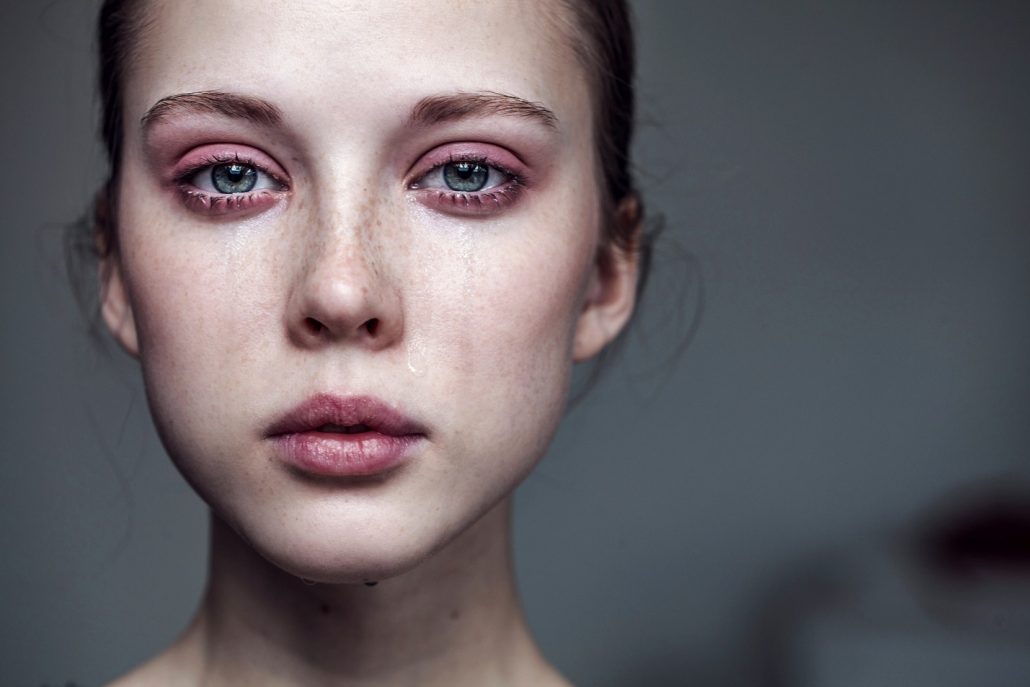
(This content is being used for illustrative purposes only; any person depicted in the content is a model)
It is not so far-fetched to be told that someone whose life is consumed with drug or alcohol dependency can find themselves facing the emotional and mental fallout. When dealing with mental health issues, it is not rare for people to also struggle with substance use disorder. Co-occurring conditions such as these tend to feed off of each other, or even help create one another.
It is almost like when someone has high blood pressure, we are not surprised when they develop heart problems. Sometimes side effects and symptoms of one condition can nurture new ailments.
According to so researchers, there are some more common combinations of co-occurring disorders with addictions. So which addictions are most likely to co-exist with each mental health condition?
Here are 5 of the most common co-occurring disorders with addictions (not in any particular order):
-
Schizophrenia with Marijuana Addiction
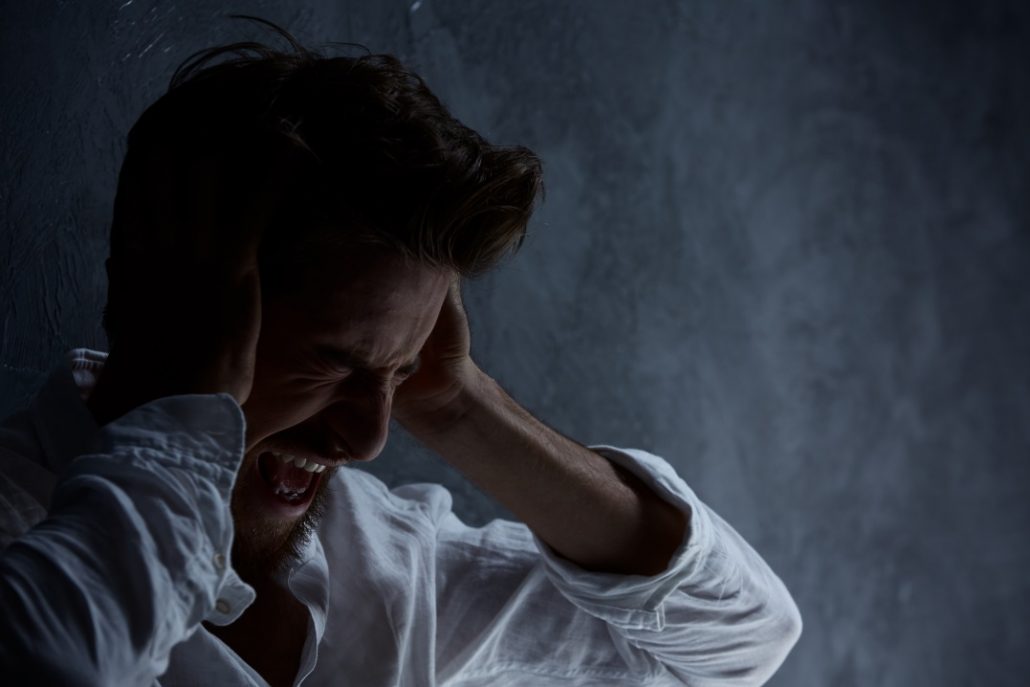
One disorder that commonly co-exists with a substance use disorder is schizophrenia. The American Journal of Psychiatry released a study that suggests approximately half of all people with schizophrenia also have a substance abuse disorder.
But one substance stands out the most when looking at people living with schizophrenia- marijuana.
The exact cause of schizophrenia is unknown, but many suspect a combination of environment, genetics and altered brain chemistry and structure to all play a part. So it is unclear why people with schizophrenia would abuse marijuana. Especially since this drug typically produces many of the same symptoms these people experience when in the midst of a schizophrenic episode. Some of these symptoms include:
- Short-term memory problems
- Delusions
- Unusual or dysfunctional ways of thinking
- Difficulty beginning and sustaining activities
- Impaired executive functioning
While not all symptoms are the same for everyone, some of these more common symptoms definitely overlap between the two. While it may not be obvious why, research suggests it is pretty obvious that marijuana is most popular for people with schizophrenia.
-
Alcoholism and Anti-Social Personality Disorder

You might be surprised with this one because most people assume alcohol is most commonly matched with depression.
Anti-social personality disorder is easier to understand when one explains the concept of personality disorders in general.
To put it simply, a personality disorder is an enduring pattern of personal experience and behavior that deviates noticeably from the expectations of the individual’s culture, which leads to personal distress of impairment. So antisocial personality disorder (ASPD) is characterized by a tendency to disregard and even violate the rights of others. Symptoms can vary from egregious to outright dangerous. They include:
- Irritability
- Aggressiveness
- Lack of remorse
- Consistent irresponsibility
- Recklessness
- Impulsivity
- Deceitfulness
- Lack of stability in a job and home life
- Disregard for society and laws
- Violation of the physical or emotional rights of others
Often the more intense cases earn the titles of sociopathic or psychopathic.
Alcohol abuse very frequency co-occurs with other mental health disorders. However, according to the National Institute on Alcohol Abuse and Alcoholism (NIAAA), the disorder with the closest connection to alcoholism is anti-social personality disorder.
In fact, people who drink to excess on a regular basis are 21 times more likely to deal with ASPD when compared to people who don’t have alcoholism.
The NIAAA also states that both of these disorders typically develop early in life. However, alcoholism can actually make the underlying mental illness worse. Intoxication can lower an individual’s inhibitions, which makes their antisocial behaviors more prevalent. This may also lead to more dangerous manifestations of the disorder.
-
Anxiety Disorders and Cocaine Addiction

Cocaine is an extremely powerful narcotic stimulant, which gives users feelings of intense euphoria. However, the tradeoff is a very steep price to pay considering how dangerous this drug really is. Continued cocaine use typically leads to symptoms that essentially mirror an anxiety disorder, including:
- Restlessness
- Hallucinations
- Paranoia
- Insomnia
- Difficulty concentrating
- Aggression
Because cocaine is a stimulant, it speeds up and amplifies activity of the brain’s neurotransmitters. Certain neurotransmitters at higher levels induce anxiety. So anxiety is actually a symptom of cocaine use already. Cocaine use also has the potential to create psychotic episodes. Some people even experience severe mental symptoms as a result of use.
As a long-term effect of cocaine use, brain circuits are more sensitive while struggling to respond to natural stimuli, and the results are often related to mood and mental health. Statistics show that there is a very high risk of anxiety and cocaine abuse occurring together. Then if you already have an anxiety disorder, the risk becomes even higher that you will develop a severe emotional problem when using a drug like cocaine.
While the adverse effects of cocaine use can eventually fade for those able to achieve a long-lasting sobriety, sometimes the damage lingers. Those unusual thoughts and behaviors can continue even long after someone has given up the drug.
-
Prescription Opioid Addiction and PTSD
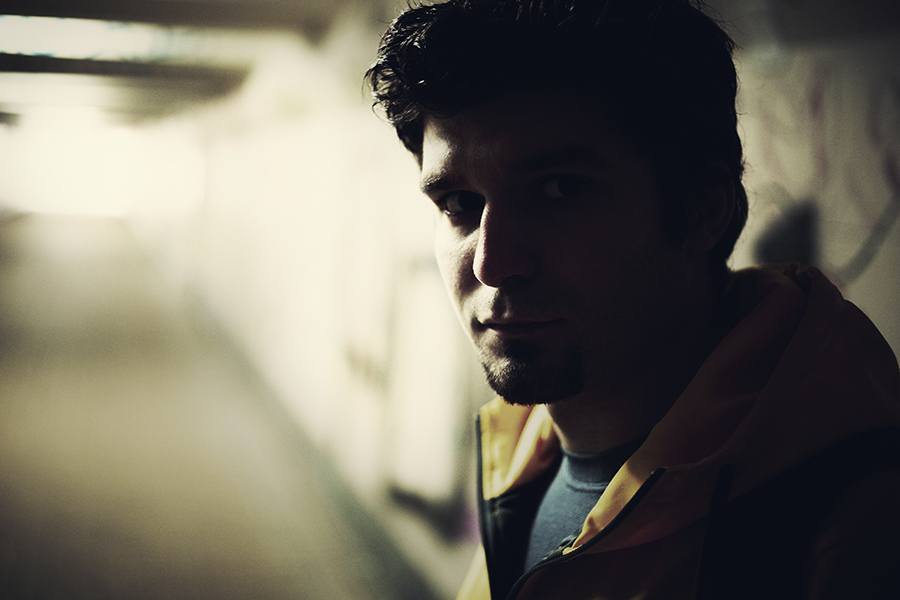
Post-traumatic stress disorder (PTSD) is a mental illness that takes hold in the aftermath of an intense and traumatic experience. Often, people who survive tragedies, war and other dangerous or life-altering events will experience PTSD.
In some circumstances, people will leave their experience with serious physical injuries, and often, those injuries are treated with prescription painkillers. This is just one way that prescription opioids have contributed to a huge epidemic that has been hurting America for the past several years.
Prescription opioids often boost feelings of pleasure and calm inside the brain, and sometimes people who have PTSD end up abusing these medications in order to experience euphoria and numb themselves to not just their physical agony, but also their emotional trauma. This can become an endless cycle of self-medicating. This is especially true with veterans. In fact, some research indicates that veterans with pain and PTSD are 3 times more likely to receive opioids compared to those without any mental health disorders.
It is true that having effective pain medications is very important to improve the quality of life for those with physical pain, especially chronic pain patients. However, mixing powerful opioids like prescription painkillers with PTSD can lead to tragic outcomes. With increasing rates of veteran suicides over the past several years, one can only image what impact the surging opioid crisis may have had on those struggling with PTSD.
-
Depression with Heroin Addiction

Throughout one of the worst drug epidemics in American history, heroin has been a driving force behind countless overdoses and skyrocketing death rates. Heroin isn’t just devastating physically, but also mentally and emotionally crippling. The connection between these adverse effects and depressive disorders is remarkable.
The allure of heroin is that is can make users feel an overwhelming sense of pleasure for a short time. However, long-time use of heroin can burn out the portions of the brain responsible for producing natural signals of pleasure, leaving them incapable of feeling good on their own without the drug. The drug alters brain chemistry and creates mood changes.
Advances in Psychiatric Treatment estimates that 48% of opioid users have experienced depression at some point in their lives.
Extended use of heroin can eventually cause a form of brain damage that leads to depression. Users can become physically incapable of feeling happiness unless the drug is present. Withdrawal symptoms from heroin can also exacerbate symptoms of depression. Many of them are actually overlapping symptoms, such as:
- Restlessness
- Irritability
- Slow thinking, speaking or body movements
- Loss of interests
- Sleep problems
- Physical pains
- Headaches
- Changes in appetite
The combination of depression and heroin addiction is incredibly common. Sometimes it can be difficult for people to tell which issue came first, but ultimately they can both be exceedingly debilitating, or even deadly.
Dual Diagnosis Treatment

Dual diagnosis means that a person is dealing with two medical conditions that are co-occurring. In regards to the field of drug addiction, dual diagnosis specifically means that someone is struggling with both substance use disorder and another mental or behavioral health issue. Sometimes it is because prolonged drug use has contributed to developing a mental health issue, while other times it is because someone has tried to self-medicate when facing a mental health issue.
Dual diagnosis treatment is so important because it provides the opportunity to treat both co-occurring disorders simultaneously. For those suffering with more than one disorder, it is not nearly as effective to focus on treating one while ignoring the other. Holistic healing is all about addressing every aspect of each individual to help them find success in every part of their life.
Palm Healthcare Company believes in providing holistic addiction resources to help treat not just the addiction, but also any other issue that could be holding you back from achieving a full life of lasting recovery. If you or someone you love is struggling, please call toll-free now.
CALL NOW 1-888-922-5398
by Justin Mckibben | Aug 1, 2017 | Depression, Dual Diagnosis, Heroin, Mental Health, Mood Disorders, Suicide
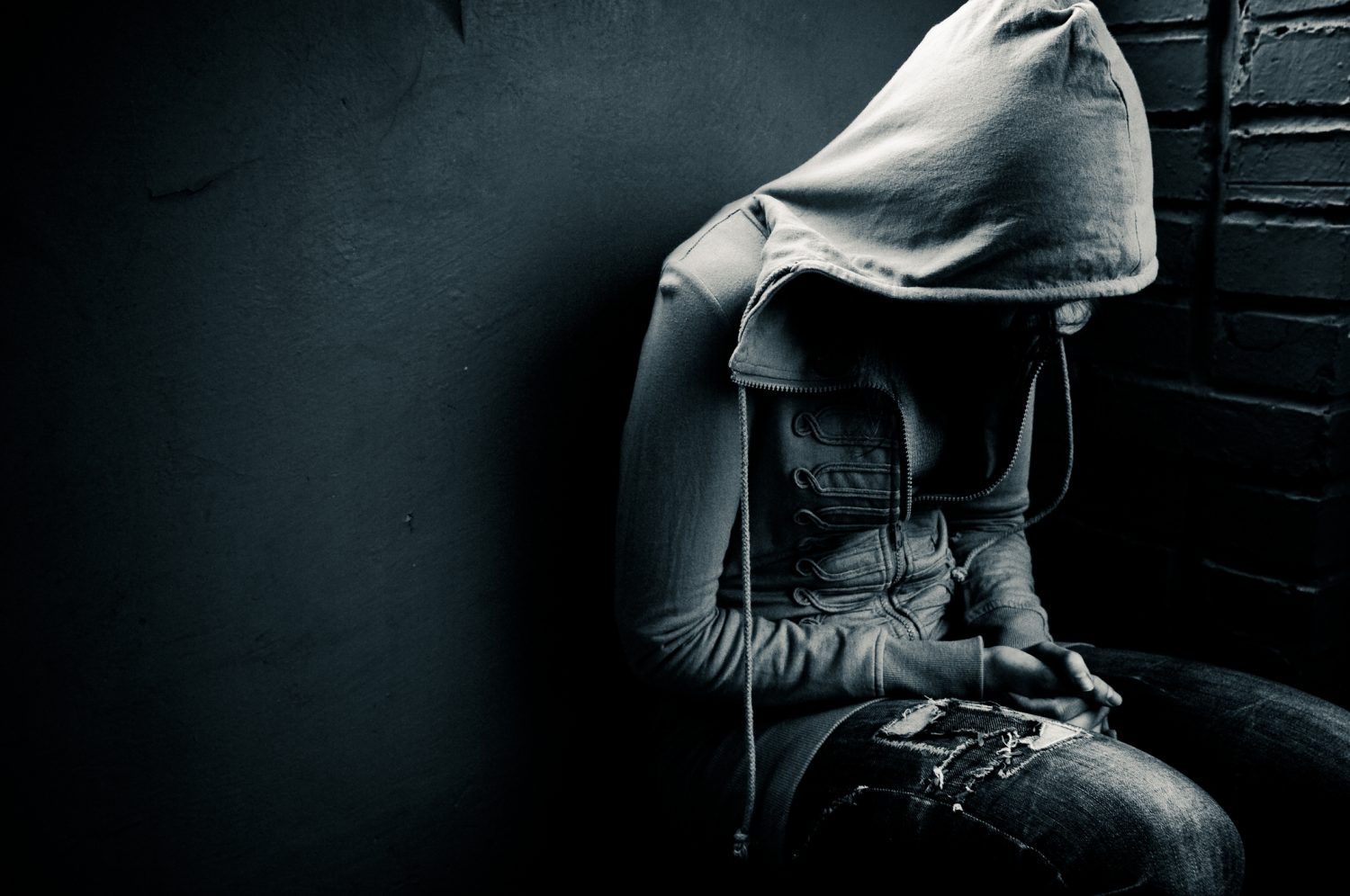
(This content is being used for illustrative purposes only; any person depicted in the content is a model)
For many who have struggled with substance abuse it comes as no surprise that a link can be drawn between their drug or alcohol use and their mental health. A lot of people who struggle with addiction have experienced some form of emotional distress, trauma or abuse that has made a definite impact on their lives. While this may not be the sole reason behind their use, issues concerning mental health can contribute to drug or alcohol use in a dramatic way. With heroin and depression, the two tend to feed off of one another, creating an intense and deeper connection.
Understanding Depression
Depression is a very common but also very serious mood disorder, also referred to as:
- Major depressive disorder
- Clinical depression
This mental health condition causes a variety of symptoms that impact how an individual thinks, feels, and handles their day to day lives. A depression diagnosis depends on symptoms being present for at least two weeks, and some forms of depression will differ, or develop under unique circumstances. Some specific forms of depression include:
-
Persistent Depressive Disorder (Dysthymia)
This is a depressed mood lasting for at least two years. Sometimes the episodes of major depression is experienced in periods of less severe symptoms, but still the symptoms persist for two years or more.
-
Psychotic Depression
This is pretty straight forward. It happens when someone experiences severe depression along with some form of psychosis, such as:
These psychotic symptoms typically revolve around a particular depressive subject like guilt, poverty or illness.
-
Seasonal Affective Depression
This is the onset of depressive symptoms during winter months when there is less natural sunlight, which is why some call it ‘winter depression’. It is commonly characterized by:
- Social withdrawal
- Increase in sleep
- Weight gain
This depression typically disappears during spring and summer months as better weather returns, but comes back around every year.
-
Perinatal Depression
Many women experience relatively mild depressive and anxiety symptoms after delivery, usually only lasting around two weeks. However, perinatal depression is much more serious.
Mothers with perinatal depression experience full-blown major depression during pregnancy or after delivery, commonly known as postpartum depression. Feelings that accompany perinatal depression include:
These can make it difficult for new mothers to complete daily care activities for themselves and/or for their babies.
-
Bipolar Disorder
While bipolar disorder is technically different from depression, individuals with bipolar disorder do experience episodes of intensely low moods that qualify as major depression- referred to as ‘bipolar depression’.
However, someone with bipolar disorder also experiences extreme high moods, either irritable or euphoric in nature. These moods are also called ‘mania’, or the less intense with are called ‘hypomania’. This is why bipolar disorder was once called ‘manic depressive disorder’.
Beyond these five there are other forms of depression, and symptoms of depression may vary from person to person. But for most people with depression the symptoms they do experience are consistent on an almost daily basis.
Psychology of Heroin
For those who don’t know, heroin is a synthetic drug produced from morphine. Morphine is a powerful analgesic derived from the opium poppy plant. The effects of heroin are a result of the substance binding with receptors in the brain that respond to opiates. Once ingested, heroin converts to morphine in the brain, and this potent compound effects the brain in ways that influence psychology.
Morphine slows the neurological activity in the brain, creating sedation. This sedation creates the desired effect of many heroin users, which is the sense of profound relaxation.
Yet, the National Alliance on Mental Illness warns that people with psychiatric disorders (such as depression) are more likely to experience very negative side-effects. So while people with depression may try to use heroin to numb themselves to feelings of sadness, guilt or despair, they actually create a chemical reaction in the brain that exacerbates their depressive symptoms.
Heroin and Depression
Heroin and depression have a symbiotic relationship that creates a viscous cycle. The two fuel each other. An individual may use heroin to try and escape their depressive feelings, but using heroin frequently worsens symptoms such as:
Thus these feelings make the depression worse, the individual will use more heroin to escape, and the cycle continues.
With heroin and depression, the physical consequences of heroin use can also cause severe emotional distress. Physical effects of heroin that can increase feelings of depression include:
- Respiratory illness
- Blood-borne disease
- Muscular weakness
- Vascular damage
And heroin’s impact on an individual’s personal life can make depression even worse, such as:
- Financial problems
- Job loss
- Legal trouble
- Relationship issues
Again, these issues can cause a heroin user to abuse the drug more in order to cope with these difficulties, which continues to feed into their problems and exacerbate the issues even more.
Withdrawal from Heroin and Depression
Withdrawal from heroin is one of the typical reasons that many people trying to quit the drug are unsuccessful. These unpleasant side effects of not having the drug often pushes people trying to give up heroin back to the drug just to feel relief, and for those with depression the withdrawals from heroin can seem even more relentless.
Trying to abruptly discontinue heroin use without the help of medical detox will cause uncomfortable and sometimes extremely painful symptoms such as:
- Nervousness
- Intense cravings
- Restlessness
- Involuntary leg movement
- Sweating
- Muscle pain
- Sleeping problems
- Runny nose
- Stomach Pain
- Nausea
- Vomiting
- Diarrhea
Heavy use over an extended period can also lead to seizures. But while the physical withdrawal symptoms are already pretty bad, the psychological side effects can seem impossible to overcome, especially for someone with depression or other mental health issues.
Dual Diagnosis Treatment for Heroin and Depression
One of the most critical parts of treatment for heroin users with depression is to find the root cause of the depression, which is also one of the most challenging aspect of recovery for heroin users. Depression is not just a bad mood, and it does not simply stem from one source. Some of the most common sources of depression include:
- Genetics
- Brain chemistry
- Psychological trauma
- Physical disability
- Stressful social environment
- Drug or alcohol abuse
Dual diagnosis treatment is crucial for someone struggling with heroin and depression because the two conditions have such similar symptoms, which make each other worse. In many cases, it is difficult to even discover what came first, depression or heroin addiction. Either way, a huge factor to overcoming heroin and depression is with comprehensive and holistic dual diagnosis treatment.
Simultaneously addressing both issues and giving equal attention to both conditions gives way for more complete recovery. If one of the two is ignored, then it has the potential to eventually cause a relapse into the other. The deeper connection with heroin and depression is that these each of them is commonly inspired by similar circumstances, including genetics and trauma. Both will thrive through the impact of the other. Both are damaging and potentially fatal. But there is also help for each, and when treated in tandem they can each be overcome.
At Palm Healthcare Company, the idea of treating all parts of each individual is the core concept of our holistic approach to substance use disorder treatment. We believe that by providing personalized and effective care for each individual helps create lasting health, freedom and happiness in every aspect of life. If you or someone you love is struggling, please call toll-free now.
CALL NOW 1-888-922-5398
by staff | Jul 7, 2017 | Addiction, Addiction Stigma, Addiction Treatment, Detox, Family, Inpatient Treatment, Outpatient Treatment, Parenting
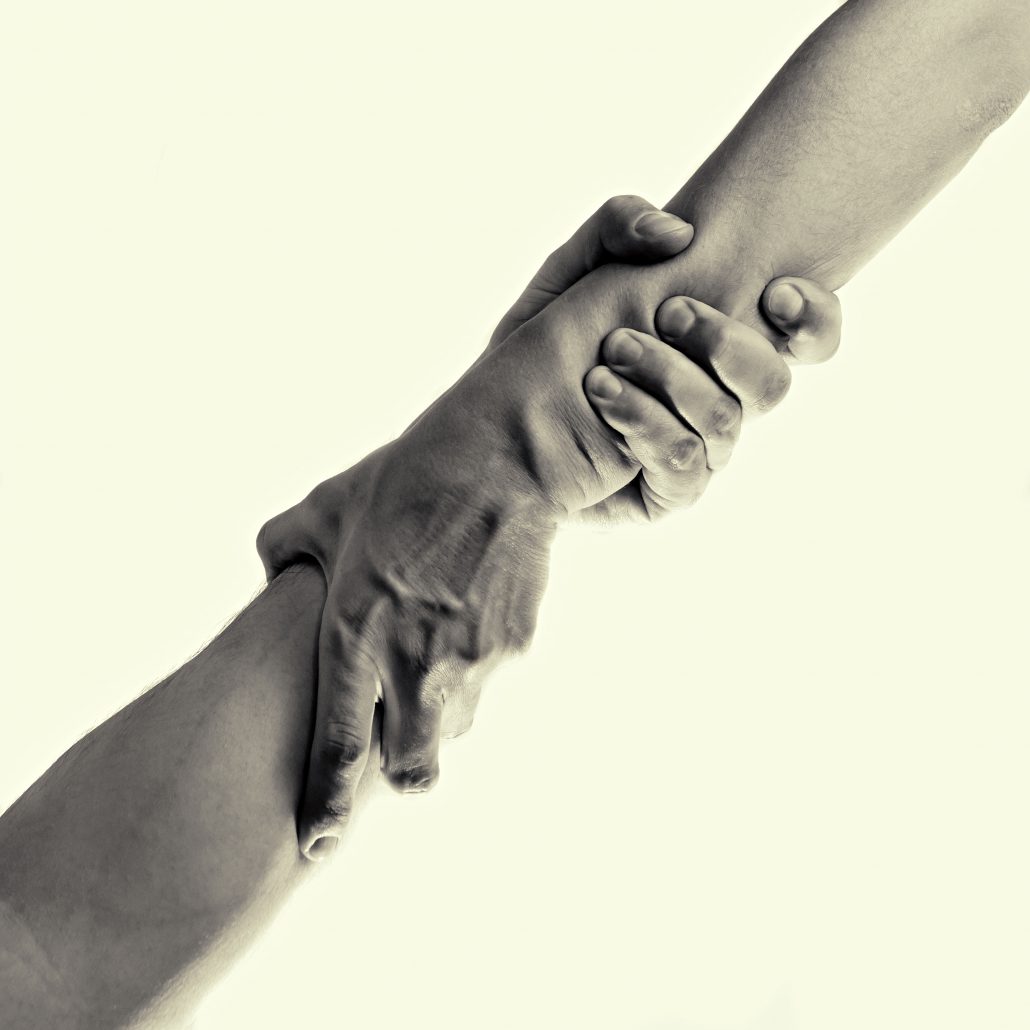
Every member of the Palm Healthcare Family, from the administrators behind the scenes to those on the front lines along with a dedicated clinical team, are committed to helping support and educate anyone looking for help when struggling with a substance use disorder. Given the recent issues facing the nation, including the addiction crisis and the concern for ensuring safe and effective treatment, our clinical staff has chosen to speak to everyone out there looking for answers in their own words, hoping to shine new light on some difficult conversations.
To learn more about how to handle the difficult emotions and situations parents and family members face with an addicted loved one, download our FREE e-book
“What is the Difference Between Helping and Hurting”
DOWNLOAD FREE E-BOOK
Here we have some crucial information from Janice Hemmer, Tischler LCSW, ACSW, CAC who is the Senior Program Director of Palm Healthcare, with 21 years experience in the field of addiction.
Don’t be afraid to ask for help
Nearly every day, you can find an article in the media or online that discusses the addiction epidemic facing the United States and the state of drug and alcohol treatment today. Stories of patients being taken advantage of by unseemly “Sober Homes” and news reports of overdoses are rampant. To some degree, it is a good thing that the media is shining a light on this insidious problem. After all, people who only want to make a quick buck by manipulating those in dire need of help are out there in force. We do need to make sure that the issue is addressed and we should never stop trying to force these criminals out of the system. However, are media outlets and sensationalism scaring people away from the professional and reputable treatment programs that produce real long lasting results?
It is vital to remember that addiction is a neuro-biological disease. Addicts need professional medical intervention and psychotherapy to address the true causes of their addiction. It is incumbent upon the professionals in the treatment community, and the media, to educate and inform people about how to properly vet a treatment facility or program. To that end, the remainder of this article will focus on what patients and their families need to know to get their addicted loved one into an effective treatment program.
Here are some important questions you should ask about any treatment program, along with the answers you should be looking for.
Level of Credibility
-
What credentials does the program have?
Your state requires that addiction treatment programs be licensed, it is important to check with the state about the current validation of any license. Additionally, organizations such as “The Joint Commission” and “Commission on Accreditation of Rehabilitation Facilities” or CARF ongoingly audit treatment programs to ensure that they are meeting the highest possible standards.
-
Content of programming: What theoretical models of treatment do they follow?
There are a variety of treatment modalities available to behavioral health professionals. These can include Cognitive Behavioral Therapy, Trauma Therapy, Treatment of Co-Occurring Disorders, Life Skills and many others. A reputable program will design a treatment regimen that is suited to your specific issues.
Level of Transparency
-
Pre-Screening
Does the intake coordinator inform you of any tests or procedures that you must submit to before or during the admission process (Blood tests, urinalysis etc.)? Do they ask questions about your medical history? Do they discuss all possible costs that you may incur while in the program and how that will be handled?
-
Family Involvement
Does the facility offer a family program that encourages family members to become involved with your treatment and invested in a positive outcome? Do they educate the family about the goals of treatment and involve them in the discharge planning procedures? Good programs know that the cooperation of family members is a big factor in sustaining recovery. Oftentimes, families need to understand the clients level of functioning and how to avoid behaviors that might inadvertently interfere with the recovery process.
-
Does the program allow you to tour the facility?
You should be able to see the environment that your loved one will be living in during treatment. Do they discuss their rules and day to day expectations?
Don’t throw the baby out with the bathwater. While it is important to be vigilant in your search for a reputable program and to educate yourself as much as possible about addictive behaviors, don’t let the stories about scammers scare you or your loved one away from treatment. There will always be those who try to take advantage of people. Just remember that a big part of treatment is learning how to identify and avoid people who exhibit those behaviors. Due diligence goes a long way towards securing treatment for yourself or for those you love. It is well worth the effort.
Janice Hemmer- Tischler LCSW, ACSW, CAC
For more information on how to find a safe, ethical and effective addiction treatment program make sure to explore more of our Palm Healthcare Company website. If you or someone you love is struggling, please call toll-free now. We want to help.
CALL NOW 1-888-922-5398












